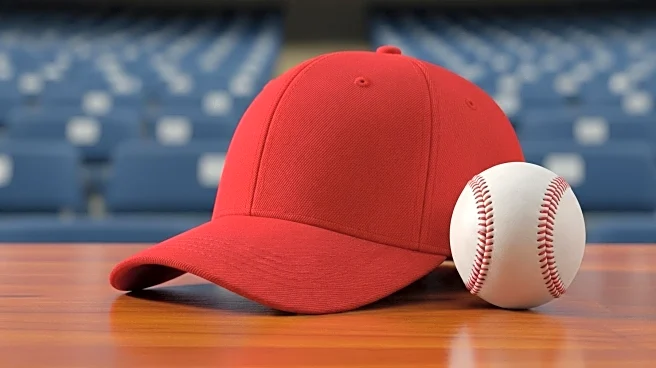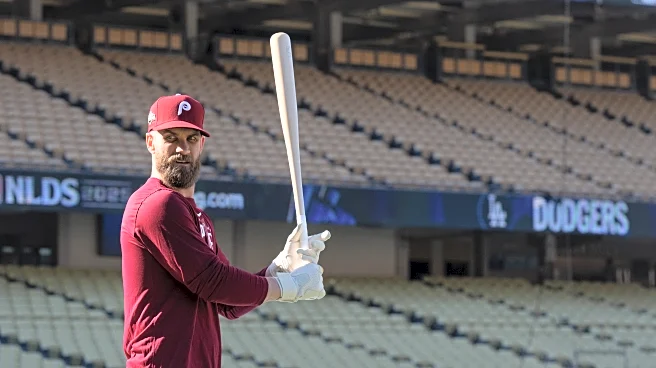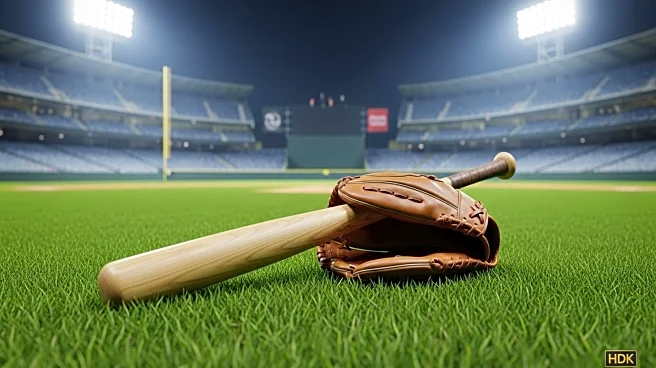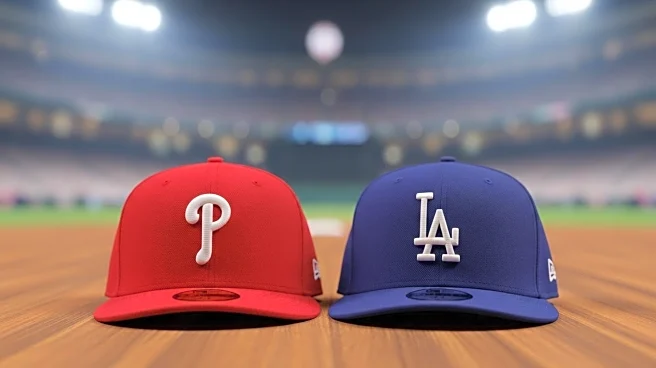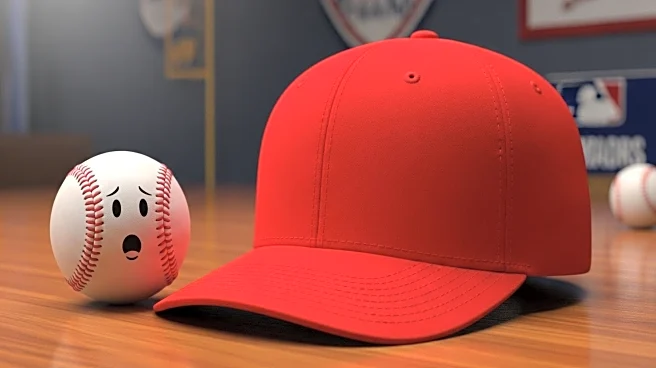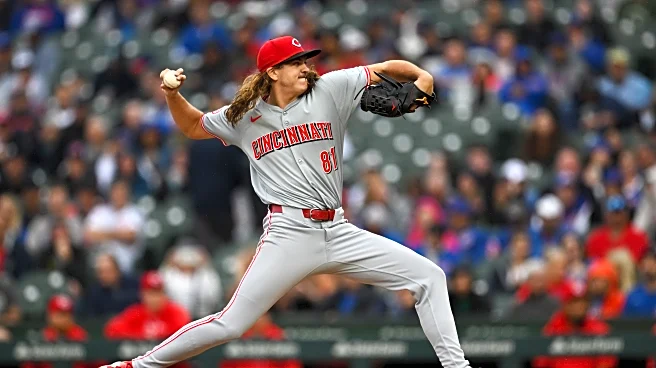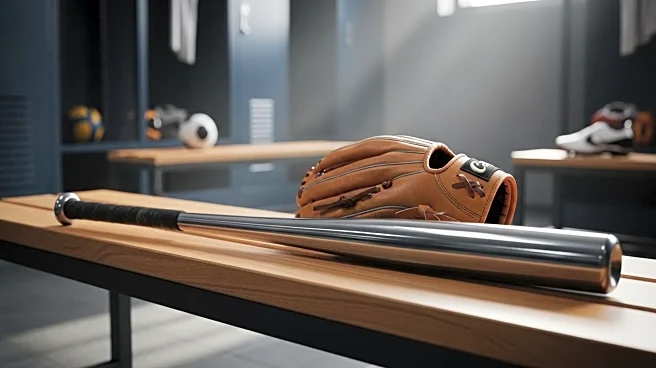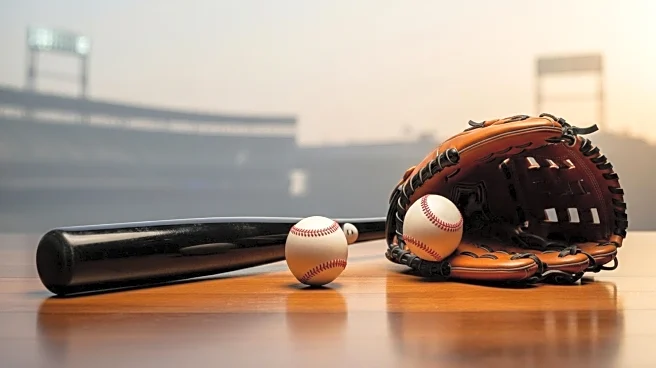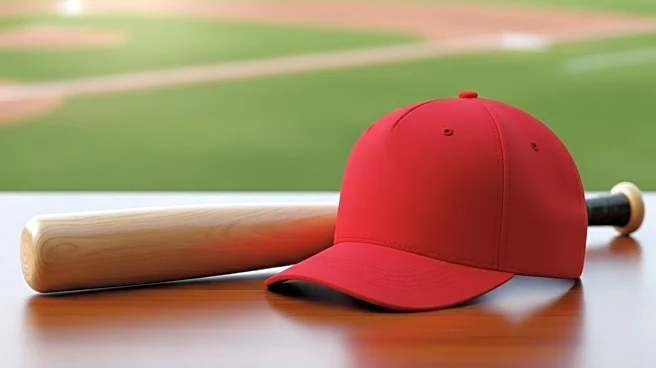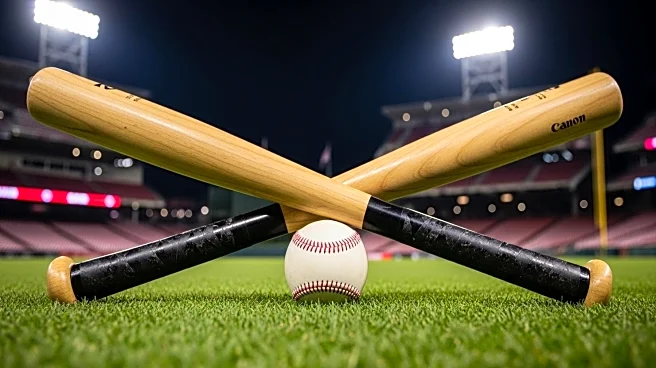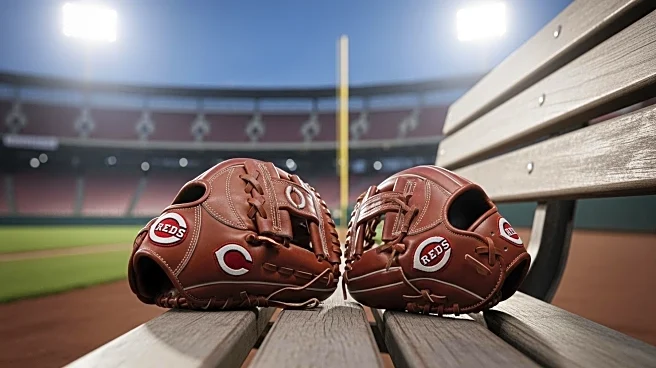What is the story about?
What's Happening?
The Cincinnati Reds, after securing the third and final NL Wild Card spot, faced a swift playoff exit following a two-game sweep by the Los Angeles Dodgers. In the wake of this, discussions have emerged regarding potential offseason strategies to enhance the team's performance. A notable suggestion from MLB.com's Mark Sheldon involves trading Hunter Greene, the Reds' ace starting pitcher. Greene, a 2024 All-Star and two-time Opening Day starter, is under contract through 2028. Despite his impressive triple-digit velocity, Greene's career has been marred by injuries, limiting his innings and starts. Sheldon suggests that trading Greene could free up salary space for acquiring a free agent bat or a quality hitter in return. However, this idea has sparked debate among fans, with some questioning the logic of trading a top pitcher on a relatively modest contract.
Why It's Important?
The potential trade of Hunter Greene is significant for several reasons. Greene is considered one of the best pitchers in MLB, and his departure could impact the Reds' pitching strength. Trading him might allow the Reds to bolster their offensive lineup, but it also risks losing a key player who can dominate on the mound. The decision reflects broader strategic considerations for the Reds as they aim to improve their competitiveness in the league. Fans and analysts are divided on whether the trade would be beneficial, highlighting the complexities of balancing team needs and financial constraints. The outcome of this decision could influence the Reds' performance in future seasons and their ability to attract talent.
What's Next?
The Reds' president of baseball operations, Nick Krall, has refrained from speculating on potential trades, leaving the future uncertain. If the Reds decide to pursue trading Greene, they will likely seek significant compensation, possibly in the form of major contributors at the big league level. The team's management will need to weigh the benefits of acquiring offensive talent against the loss of a top pitcher. Fan reactions and media discussions may also influence the team's decision-making process. As the offseason progresses, the Reds will continue to explore options to strengthen their roster, with potential trades being a key focus.
Beyond the Headlines
The consideration of trading Hunter Greene raises broader questions about team management and player valuation in MLB. It underscores the challenges teams face in balancing financial constraints with competitive aspirations. The decision also highlights the impact of player injuries on career trajectories and team strategies. Additionally, it reflects the dynamic nature of sports management, where decisions can have long-term implications for team identity and fan engagement. The Reds' approach to this situation may set a precedent for how other teams handle similar scenarios.
AI Generated Content
Do you find this article useful?
